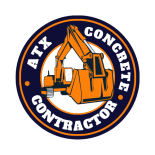A home’s foundation is often taken for granted, hidden beneath layers of flooring and finishes. However, when signs of damage surface, understanding the foundation repair process becomes crucial. In this exploration, we uncover the intricacies of the foundation repair journey, revealing the steps taken to restore stability and ensure the longevity of the structural base.
Diagnosing the Underlying Issues: The Art of Foundation Assessment
The foundation repair process initiates with a comprehensive assessment, a diagnostic art form conducted by skilled professionals. This phase involves peeling back the layers, figuratively and sometimes literally, to expose the underlying issues plaguing the foundation. Professional foundation engineers meticulously examine the structure, utilizing advanced techniques such as soil analysis, laser levels, and digital measurements. This diagnostic approach is akin to a medical check-up for a building, where the health of the foundation is scrutinized, and the root causes of any ailments are unveiled.
The assessment phase is not merely about identifying visible cracks or shifts. It delves deeper into understanding the soil composition, drainage patterns, and potential sources of stress on the foundation. The goal is precision, ensuring that the subsequent repair plan addresses not just the symptoms but the fundamental issues contributing to the foundation’s instability.
Crafting Solutions: The Engineering Artistry of Foundation Repair
Armed with the insights from the assessment, the foundation repair specialists embark on crafting tailored solutions, employing an engineering artistry that goes beyond mere construction. The choice of repair methods and materials is a strategic decision influenced by the unique challenges identified during the assessment. This phase involves a careful selection of techniques, such as underpinning, piering, or slabjacking, depending on the nature and extent of the foundation issues.
Underpinning, for example, is a method that involves strengthening and stabilizing the foundation by extending its depth or breadth. Piering utilizes supports driven deep into the ground to lift and stabilize the foundation. Each technique is chosen based on its suitability for the specific conditions unearthed during the assessment. It’s an art of precision, where the repair plan is tailored to address the foundation’s unique challenges with efficiency and effectiveness.
The craftsmanship of foundation repair extends to the choice of materials. Whether utilizing concrete, steel, or advanced polymers, the selection is guided by the need to not only restore stability but also fortify the foundation against future challenges. This engineering artistry ensures that the repaired foundation is not just a patch-up job but a lasting solution that enhances the structure’s resilience.
Beneath the surface of a home lies the foundation, a silent yet critical component of its structural integrity. When the need for repair arises, the foundation repair process becomes a symphony of assessment precision and engineering artistry. From diagnosing underlying issues to crafting tailored solutions, each step is a brushstroke that unveils the renewed strength of the foundation. Understanding this process is not just about fixing visible cracks; it’s about ensuring that the very base of a home stands resilient, ready to support the structure for years to come.
